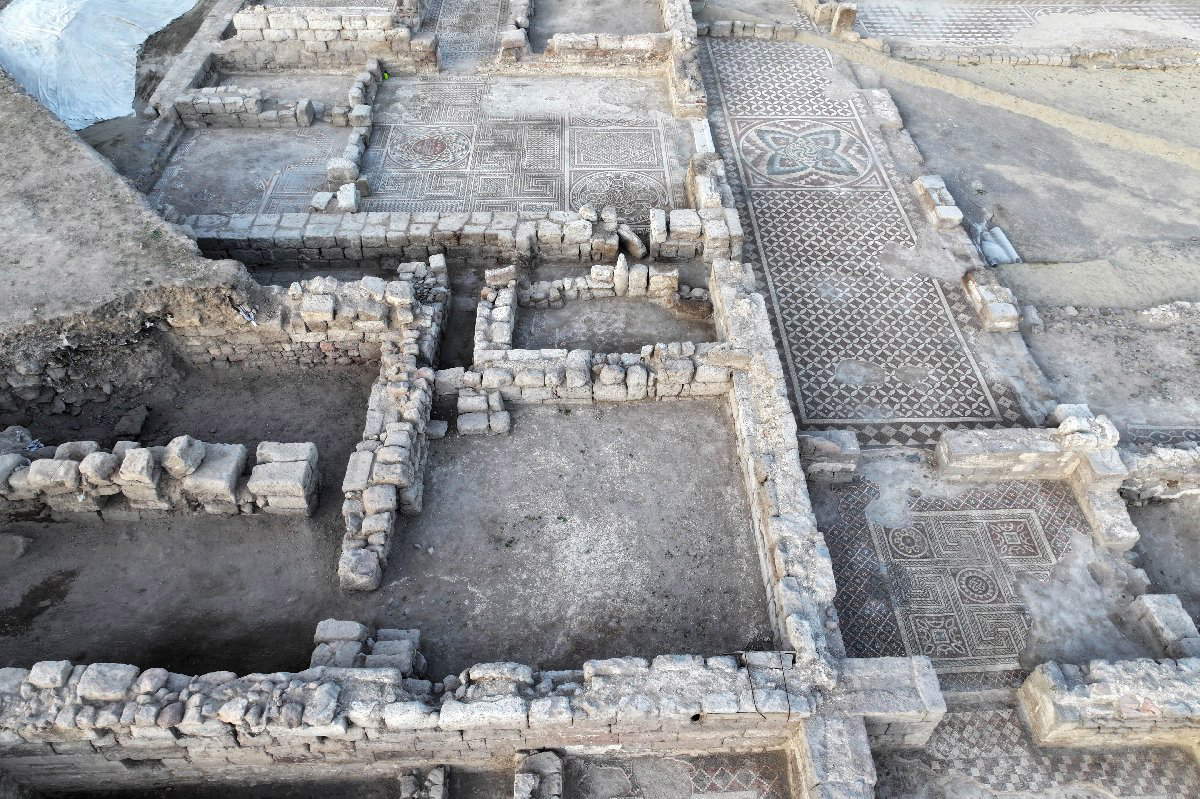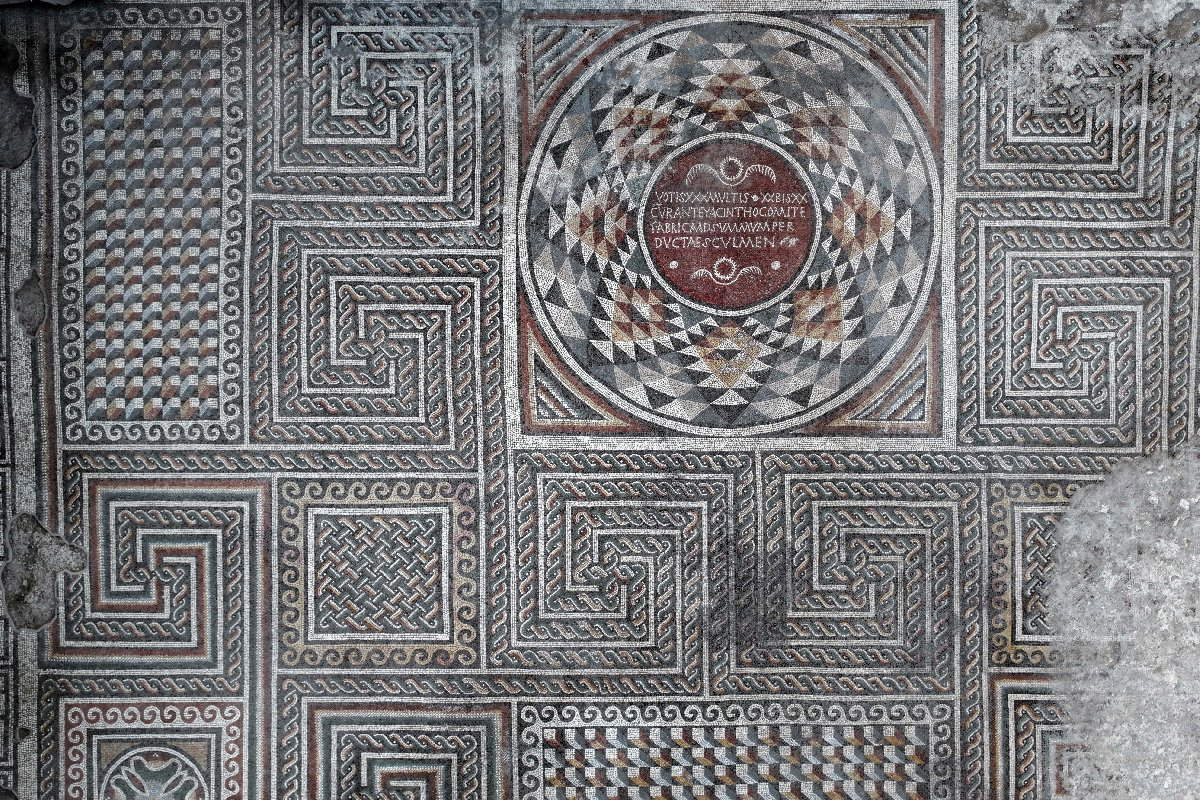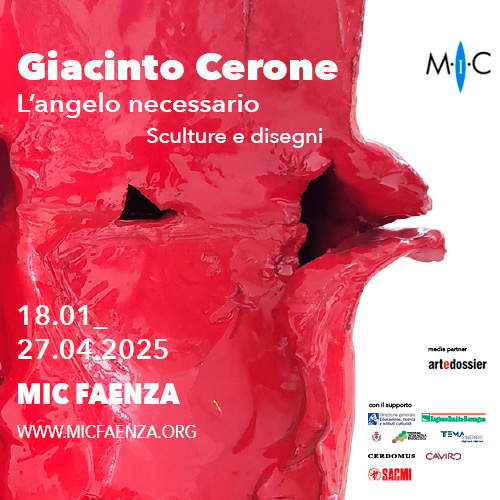Turkey, ancient floor mosaics unearthed. They may be the largest in Cappadocia
In Turkey, in the Örenşehir district of the İncesu district of Kayseri province, archaeological excavations that were carried out under the supervision of the Kayseri Museum Directorate with the support of the Municipality Kayseri Metropolitan Municipality, large floor mosaics that the Metropolitan Municipality itself said would constitute the largest floor mosaic structure in the Cappadocia andCentral Anatolia region.
Metropolitan Municipality Mayor Memduh Büyükkılıç, who visited the archaeological area on site accompanied by the authorities and expert lecturers, stressed that the excavations have reached the end of the season and that “experts say that this is a really high-end residential structure.” However, the excavations will continue in the coming season. “The mosaics found during the excavations have once again emphasized that Kayseri is the cradle of civilization in Anatolia,” Büyükkılıç commented.
Kayseri provincial director of culture and tourism Şükrü Dursun, thanking Mayor Büyükkılıç for the support (the mayor has also supported six archaeological excavations in different parts of the city), added that in the area where the excavations were carried out, “mosaic ruins were found. We started excavations here three years ago, and in the course of these excavations several points have emerged, starting with the first areas found. The area is growing and expanding every year.” Indeed, Dursun recalled, “When we first looked at it, we saw that the mosaic floors, which were 300 square meters in the early period, have reached up to 600 square meters in the recent period.” The excavations were carried out over an area of about 4,000 square meters. “Assessing the whole,” Dursun continued, “we came to the conclusion that this place was built in the 4th century. However, traces were also found dating back to the 3rd century and beyond. The quality of the floor mosaics suggests that this place is used as a very important villa in its era.”
 The mosaics of
The mosaics of The mosaics of
The mosaics of The mosaics of
The mosaics of The mosaics of
The mosaics of The mosaics of
The mosaics of
Traces of different civilizations were also found: “On the one hand, a Latin inscription was found in the place indicated as the main reception hall, and Greek inscriptions were also found. These are mostly mosaics with geometric ornaments. We see traces of different civilizations in every corner of Kayseri, the city of civilizations. When we look at Kültepe, we reach 7 thousand years of history. İncesu reflects the traces of another civilization in the area we are currently in, the mosaics here are of the highest quality,” Dursun concluded.
Dr. Can Erpek, a lecturer in the Department of Art History at Nevşehir Hacı Bektaş Veli University, explained that the mosaic might belong to an imperial residence. “We are talking about a high-end residence spread over a very large area, a residence of thirty-three rooms; we have not reached the limits of this residence, we expect that the current residence will expand even more with our excavations that will continue next year. When we think of Cappadocia and the Central Anatolian region, which has very valuable floor mosaics, it is rare to see floor mosaics on such a large residential floor. We know that there were many imperial properties in the Cappadocia region during the Roman and Byzantine periods. We found the name Hyacinthus in the inscriptions, we think it is one of the administrators of the region, we are examining the sources. When the data becomes clearer, we will be able to say more confidently that this is the residence of an important person serving in the imperial estates.”
 |
| Turkey, ancient floor mosaics unearthed. They may be the largest in Cappadocia |
Warning: the translation into English of the original Italian article was created using automatic tools. We undertake to review all articles, but we do not guarantee the total absence of inaccuracies in the translation due to the program. You can find the original by clicking on the ITA button. If you find any mistake,please contact us.





























